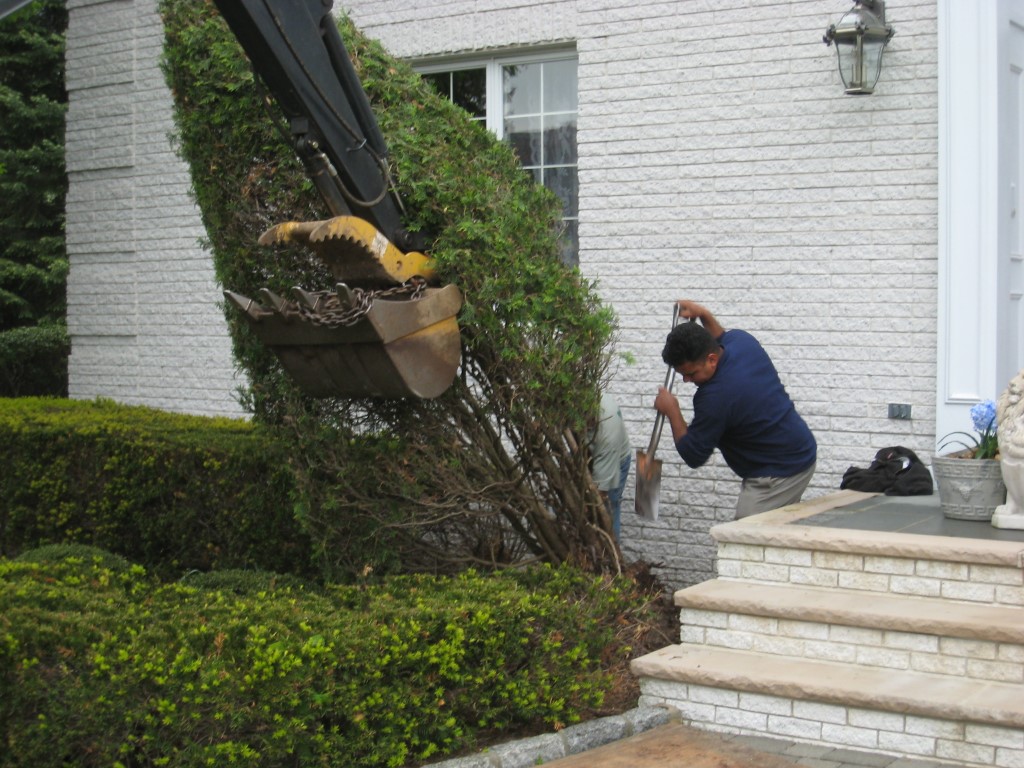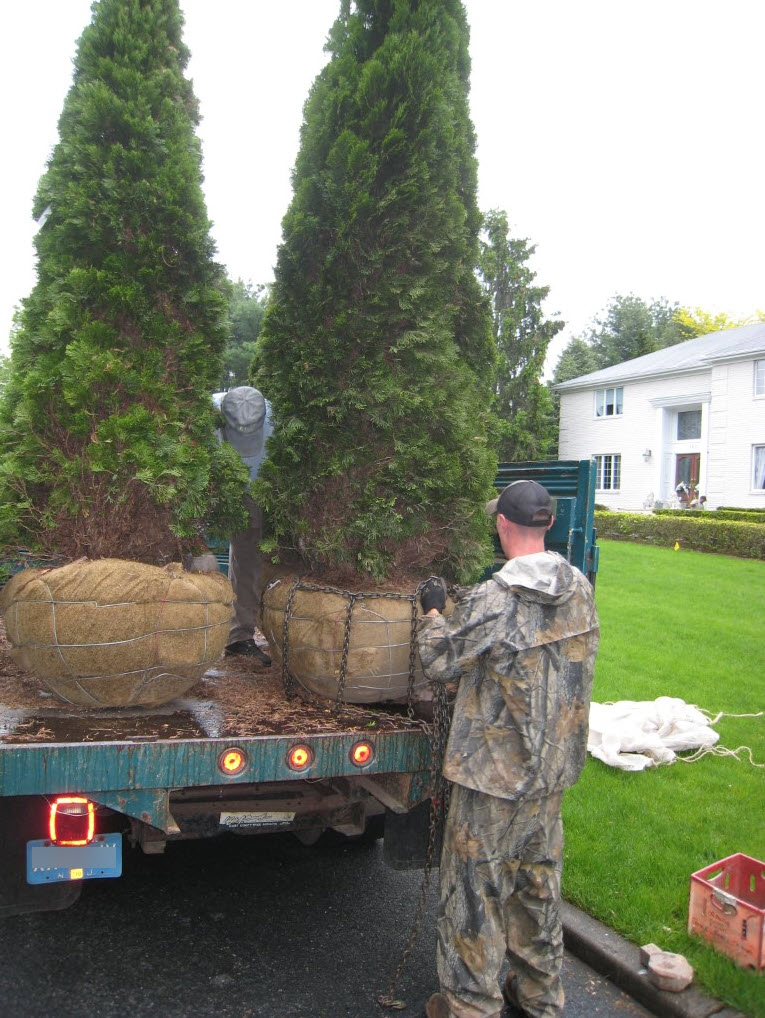Why Replace A Plant?
Well, beyond the obvious “because it’s dead”, there are other reasons for plant replacement.
In this case the homeowner was disappointed in the way these existing Arborvitae were looking. She said “they look like an x-ray of the plant”. 🙂
Over the years the maintenance contractor had been shearing them to keep the plant “in-bounds” and to keep the formal look the homeowner wanted.
This is a good example of wrong plant in the wrong spot.
The gardener has no choice but to shear it aggressively each year because this variety of Arborvitae (Dark American) wants to get so much wider than the space allows.
One Of Several Plant Replacement Methods

The perfect combination of attributes for any home improvement contractor is know what you’re doing and be neat about it.
This home’s landscape was well established and meticulously maintained . The plants needing replacement were big, heavy and not easily accessible.
The landscape company I used for this task is known for its strategic systems. The NYC Parks Commission uses them because they are so professional, efficient and methodical.
The utility companies were contacted to identify and mark-out all underground utilities.

The contractor used a mini-excavator with rubber tracks so as not to harm the driveway surface.
With a chain attached to each plant, the excavator lifted slowly while ground men with hand tools assisted and monitored the progress.
Once out of the ground, each tree was swung onto a large tarp and loaded into a truck for recycling.
Proper Plant Selection
Now it’s time to install the right plant in the right spot.

A narrow, columnar plant is the category to look for, but by measuring we know that this plant should not mature to a width greater than 5 to 6′.
Just because a plant is called “columnar” does not clarify its mature width. “Columnar” is a broad enough term to mean anything between perhaps 2 to 12′.
The plant chosen is Arborvitae ‘Emerald Green’.
In the picture above are the new trees being readied for installation.
The foreman is fitting the first root ball with a “chain cradle” which will allow the excavator to pick the plant up without damaging it — and enable the men to position the tree perfectly as its lowered into its new home.

